If you’ve ever been browsing the bakeware section at the store and found yourself overwhelmed at all of the choices, you aren’t alone. There are so many different types of baking pans and dishes available on the market that are made for specific and seasonal baking undertakings that it’s all too easy to get confused as to which one will suit your needs the best. Which pans are necessary, which ones can you live without, and which ones make baking even easier?
Don’t panic, because we are going to explain a bit more about some of these pans, exactly what they are meant for, and the differences between the different materials these pans and dishes are made from. So come along with us and let’s take a trip down the bakeware aisle to check out different types of baking dishes and pans to use on your next kitchen adventure.
Sheet Pans/Cookie Sheets
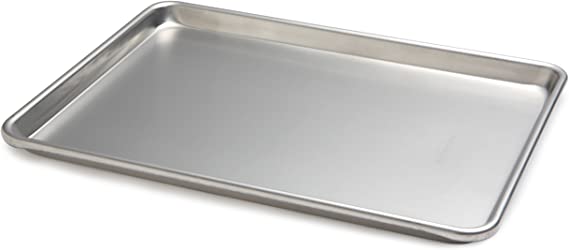
Known as sheet pans or cookie sheets, these versatile pans can accommodate a number of baking projects because they are flat, rectangular, and have a short rim all around. In addition to their ability to make excellent cookies, sheet pans are best used for baking pastries, sheet cakes, Swiss Rolls, and pizzas. You can even use them to roast potatoes!
Bundt Pans
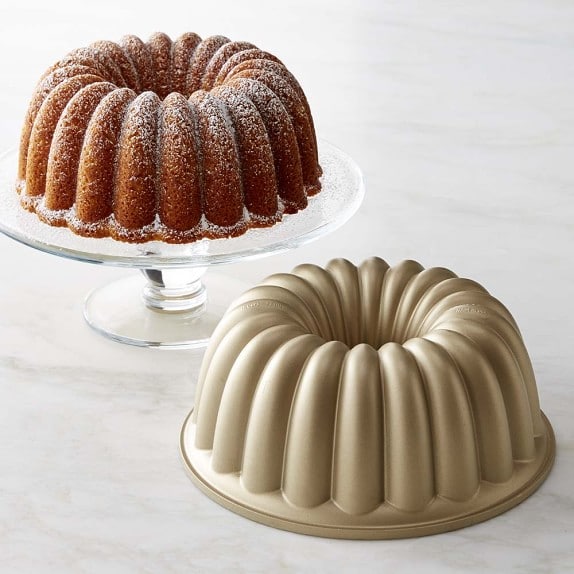
When you make a cake in a Bundt pan, it comes out looking beautiful all on its own without the need for fancy icings. These pans are round in shape, featuring a hole in the middle and the classic wavy pattern that Bundt cakes are famous for. Heavy-weight pans such as these are great for pound cakes and coffee cakes, although you can make just about any kind of cake you like in these classic decorative pans.
Tube Pans
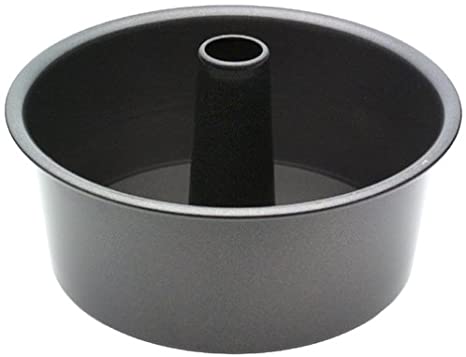
These pans are similar to Bundt pans, but they are flat on the bottom, which produces a round cake that is flat on top with a hole in the middle that almost resembles a donut. Unlike Bundt cake pans, tube pans are made for making lighter cakes like chiffon and angel food cake. Tube pans tend to have little feet on the top to help make cooling easier, as cakes baked in tube pans have to cool upside down.
Muffin Tins
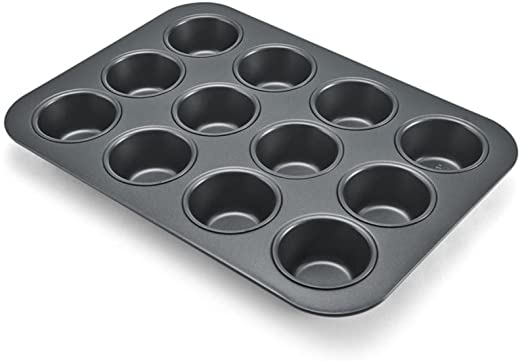
Whether you opt for a heavy-duty metal muffin tin or a simple throw-away aluminum one, these pans are perfect for smaller pastries and cakes such as muffins, cupcakes, and popovers. Some standard cake recipes can even be adapted to work in a muffin tin to make smaller individual-sized cakes.
Loaf Pans
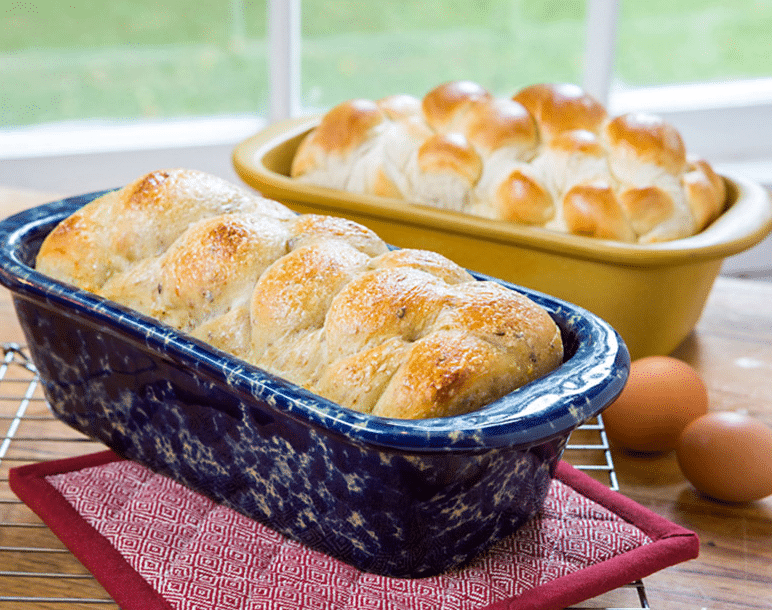
This versatile baking pan can accommodate a wide range of baked delights, from quick bread to meatloaf. When it comes to baking bread in loaf pans, the sky is the limit: you can go for batter breads, such as banana bread, as well as yeasted breads. Home bakers use their loaf pans to make homemade sweet and sandwich loaves without a problem.
Round Cake Pans
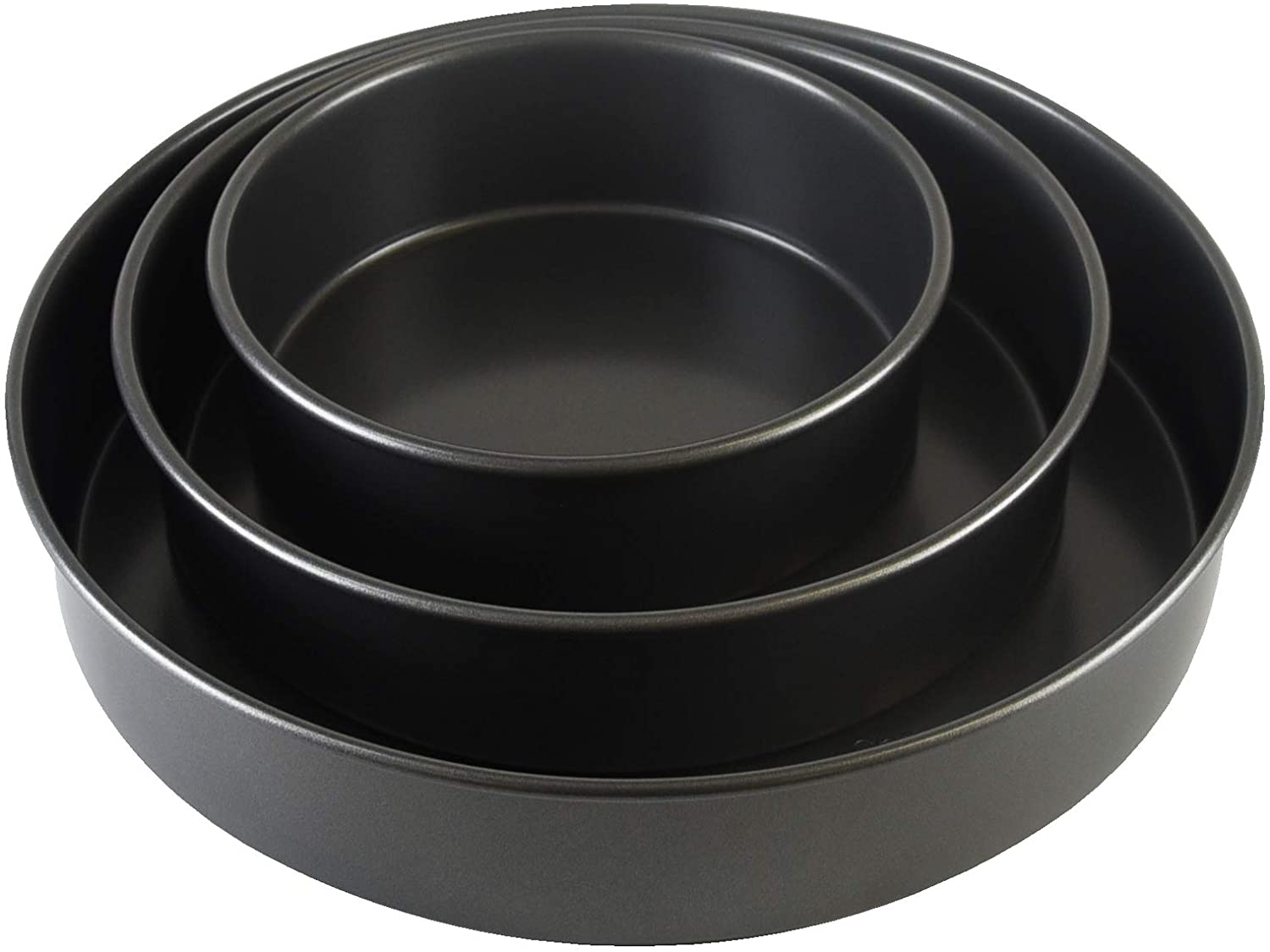
Eight-inch and nine-inch are the most common sizes for round cake pans; if you make a lot of cakes then this is a baking pan that you most certainly need. We recommend having a pair of round cake pans in the same size to make baking the layers of your cake quick and easy. You can also bake brownies in these pans and then cut wedge slices to make them a bit fancier than classic square brownies.
Eight-Inch Square Pans
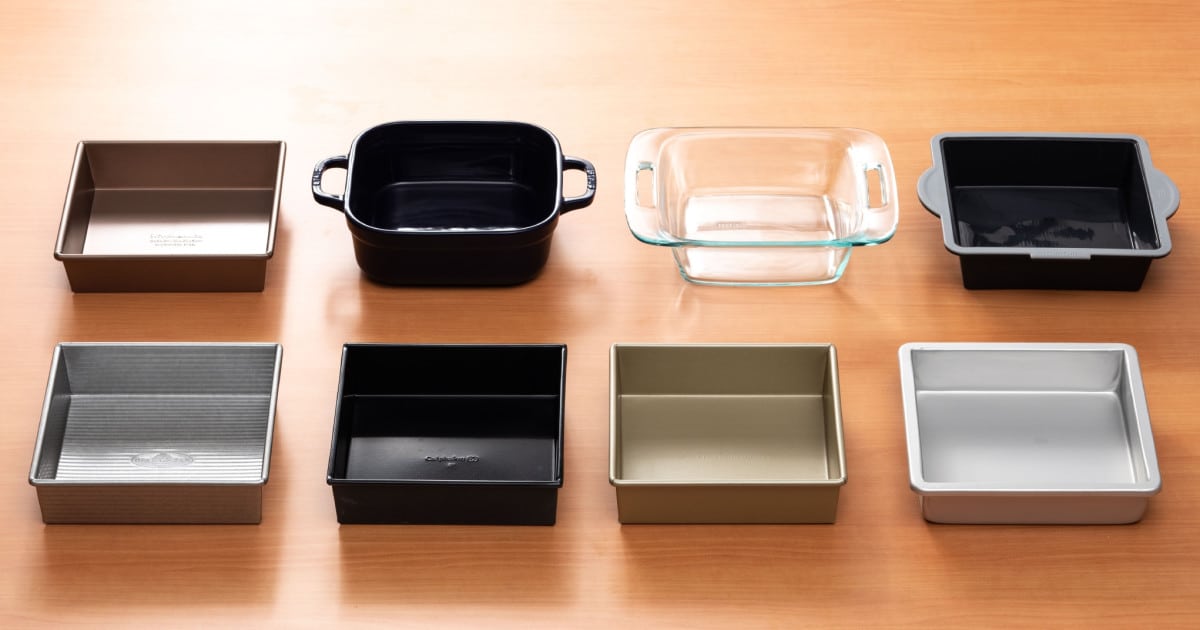
Small, square baking dishes such as this are great for making small batches of brownies or cookie bar recipes. Most standard brownie and cookie bar recipes call for an eight-inch square pan for one batch.
9×13 Inch Baking Pans
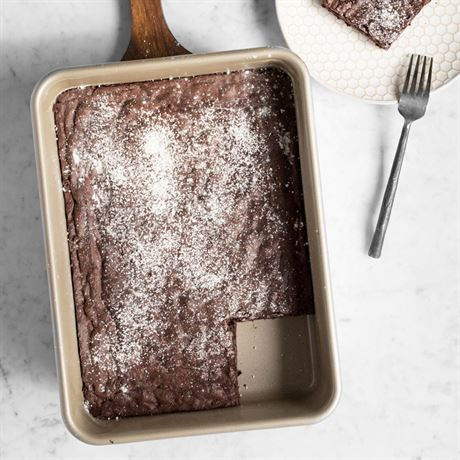
These baking pans are considered all-purpose pans because they can bake a multitude of things from cake to a casserole or even a chicken. They have higher sides on them than cookie sheets do, which makes them ideal for baked dishes that require a deeper baking pan: you can use a baking pan to make brownies, casseroles, lasagna, and a multitude of other dishes.
Springform Pans
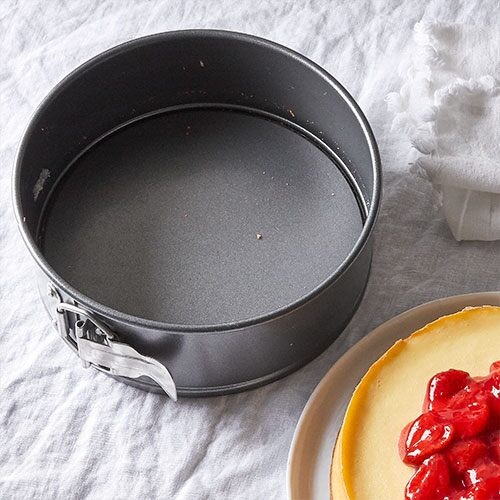
Springform pans consist of an outer edge that can be removed, leaving the outside of the baked goods exposed. A springform pan is a must-have for cheesecakes; however, they are also great for quiches, regular cakes, and even tarts if you don’t have a tart pan.
Pie Plates
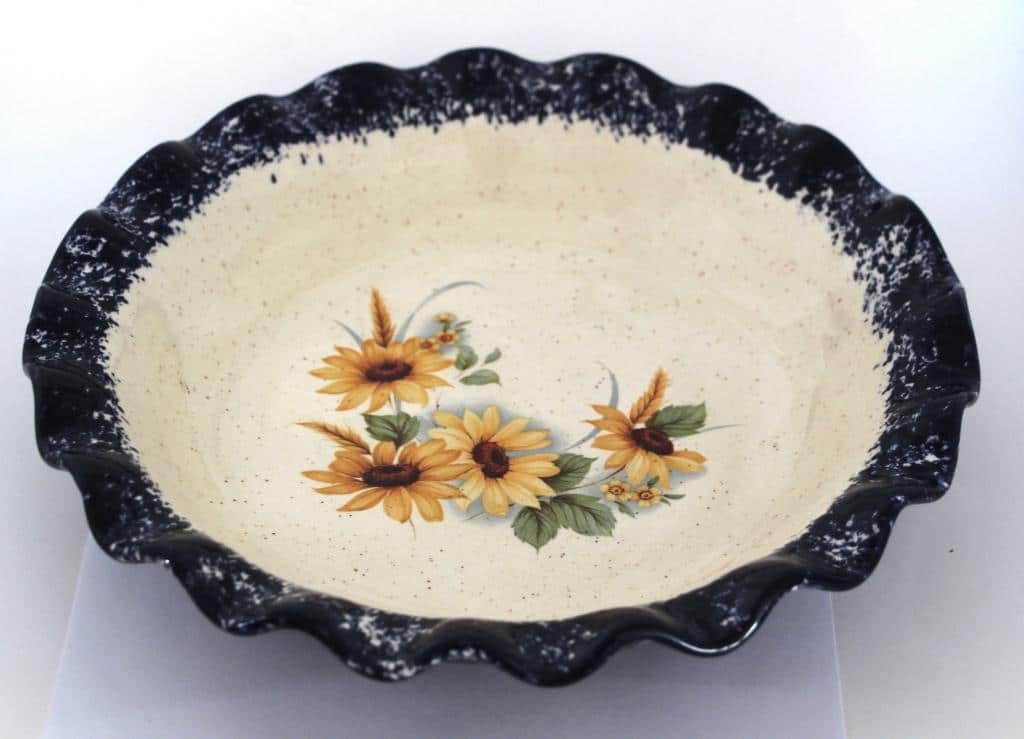
If you’re going to be making pies, then you’re going to need a pie pan. Pie pans are also great for baking brownies, loaf cakes, and other baked goods; all you have to do is adjust your baking time for that particular recipe.
What Material Should Your Baking Pans Be?
Every type of baking dish comes in different materials. The type of pan or dish you use will depend on the dish you’re preparing; you’ll need to adjust your technique and cooking times accordingly, so make sure to keep an eye on anything in the oven until you have gotten a feel for how it works.
What type of baking dish should you use?
- Glass Baking Dishes: Although glass is a poor heat conductor, it is capable of retaining heat for longer once it gets hot. This makes a glass baking dish the best thing to use if you’re going to make a casserole or any other sort of braised dish. Glass baking dishes will shatter in high heat, so it’s not recommended to use them for broiling or moving them from the oven to the stovetop.
- Metal Bakeware: Metal pans and bakeware are great heat conductors. This makes them good for baking foods that you want to heat quickly, roast, and/or brown. Metal pans not only heat up quicker, but they also cool down faster once they are taken out of the oven. Cookies and potato wedges are good to make in metal pans, for example; however, you don’t want to use them to make reactive, acidic foods because your creation might retain a metallic flavor.
- Silicone: These naturally non-stick molds have become quite popular for baking with ever since their grand debut, but what are the best uses for silicone bakeware? You can find silicone bakeware for anything from muffins to cakes, to mini pies and quiches. It’s important to grease bigger silicone baking pans to fully prevent sticking, and soaking is best to get all of the food particles out of the nooks and crannies. As a bonus, these baking devices also make great serving containers.
- Non-Stick Metal: Using non-stick pans of any kind means less work all around; removing your baked goods and then cleaning the pan becomes so much easier. You don’t have to use any sort of non-stick spray on them; they use much less oil, and they cook best on low to medium heat. Use non-stick pans for things like cakes, cookies, and brownies to prevent a sticky, patchy mess.
- Stoneware: Stoneware baking dishes are great for both the oven and the microwave. They can bake up crispy pizza, crusted bread, and evenly browned cookies. One of the best things about stoneware is that if there are leftovers, once the pan cools, you can place the whole thing right in the refrigerator.
- Throwaway Aluminum Foil Pans: These are best used for times when you have to bring a dish to a party, picnic, or a family function; they are great when you need something to bake and hold the food in that you don’t mind throwing away once everyone has finished eating it. You can make and carry pizza, bread, roast meat, and other various baked goods in these cheap, versatile pans.
Time to Start Baking!
So if you find yourself wondering which baking pan is best to use on your next kitchen adventure, refer back to this list for inspiration, play around with combinations, and have fun!